A hybrid of currants and gooseberries - sweet and fruitful yoshta
A little-known hybrid of black currant and gooseberry was obtained in 1970 by German breeders. This is an excellent variety of berry crop without thorns, with good yield and a number of other positive characteristics. Study with us the rules of care, photos and methods of using the berries of this hybrid. Perhaps such a planting will be very useful for your garden.
What is the name of the hybrid
Yoshta - so strange at first glance is the name of a hybrid of black currant and gooseberry. But if you look at it, then there is nothing complicated in the name: Jo from Johannisbeere is black currant, and Sta from Stachelbeere is ordinary gooseberry.
Since the second half of the last century, breeders have been puzzled by obtaining a species with improved characteristics: large fruits, rich taste, vitamin composition, ease of cultivation and resistance to adverse weather conditions. Yoshta fully meets these requirements, although she is only gaining popularity.
It is interesting
In other countries, attempts were also made to cross currants and gooseberries: American krondal, Swedish chrome, Hungarian rike, etc.
Description, advantages of taste and form
The gooseberry crossed with currants turned out to be spreading and high - up to 1.5-2 m. Its shoots are devoid of thorns, which makes it easier to care for the shrub and harvest. The leaves bear the characteristics of both ancestral plants: in shape they are close to gooseberries, and in smell they resemble tart currants. At the same time, the aroma of green yoshta is poorly expressed.
Yoshta berries are black-purple, with a dense skin, rounded. Weight up to 5 g. Taste - sour-sweet, nutmeg. The berries hold well in the bunch and do not crumble immediately after ripening. They are eaten both fresh and processed.
Vitamin C
By the content of vitamin C, yoshta berries are inferior to black currants, but the amount of the valuable component is twice as high as that of gooseberries. The golden mean with simple agricultural technology - this is how a hybrid can be characterized. The average amount of vitamin per 100 g of fruit is 900 mg.
According to gardeners, the advantages of yoshta are much more than disadvantages:
- This is a fast-growing plant, the first berries are harvested in the second year after planting the bush.
- With proper care, the hybrid bears fruit for more than 10 years, sometimes up to 30.
- Berries ripen by the end of June, early flowering.
- The berries are poured gradually, and not all at once - it is convenient to harvest and make preparations.
- Like many breeding achievements, this hybrid is resistant to frost and fungal diseases, which means that it can be grown in difficult climatic conditions.
- On a fruiting bush, 15 to 20 large branches provide a consistently high yield. Up to 10 kg from one bush - not every currant is able to provide the gardener with so many berries.
- Yoshta is a source of rare vitamin P, it is also rich in anthocyanins - natural dyes that heal the human body and block the development of cancer.
- The bush is known for its decorative: green dense foliage, spherical crown. In autumn, yoshta decorates the garden with its foliage for a long time.
Of the minuses of a cross between currants and gooseberries - frequent damage by glass, excessive bushiness, if growth is not controlled, and pronounced sourness. If you want sweet berries, then it is better to choose large-fruited varieties of black currant.
Growing features
When growing yoshta, you need to rely on the agricultural technology recommended for black currants and gooseberries. Caring for these shrubs is based on three basic principles:
- The bush loves spacious and well-lit areas.
- Between landings - an interval of 2 m minimum.
- Moderate humidity is the key to the health of the root system.
- The soil is selected loose, rich in potassium.
Accommodation features
If you plant yoshta in partial shade, then the berries will be noticeably sour than those ripened in the sun. Yields will also decrease.
The shrub needs good drainage. Usually the seedling is the starting material. It is worth laying a layer of expanded clay and nutritious soil in the planting hole.
When to plant
Planting is carried out both in the spring with the establishment of heat, and in the fall a month before the arrival of frost. While it is warm, a bush with a closed root system can be safely moved to the site. A yoshta seedling planted in autumn will have time to get stronger and will give young shoots by spring, and in the same summer the first small harvest will appear.
Advice
Next to yoshta, you can plant sweet black currants for pollination. But the plant is self-fertile, so the requirement is optional.
Humidity
The soil around the yoshta is always kept moderately moist. It is not necessary to constantly fill the bush, especially during the rainy season. A slight drought is better than an excess of water, which leads to rot and increases the risk of glass infestation. But you don't need to water it either: without water, the yoshta bush grows poorly, the crop is formed slowly.
In the spring, gardeners recommend loosening the soil once a month so that moisture and nutrients can better flow to the roots. Mulching is also carried out to maintain a normal level of soil moisture in any weather. Peat or humus is used as a protective layer.
Advice
For one bush, add 20-30 liters of warm water in the evening.
How to form a bush
The pruning and shaping scheme is similar to working with currant bushes:
- In spring, old and damaged shoots are removed, the main stems are shortened to the sixth bud.
- In the fall, a sanitary pruning of the bush is left: after harvesting, all branches are shortened by a third.
- Then, before the dacha is closed, shoots from 7 years and older are completely removed - this is a necessary procedure for plant rejuvenation.
- Transplantation is extremely rare, and if the bush is too old, the soil around it is depleted, or neighboring plantings and buildings interfere with the plant.
Advice
There are bushes that are bad neighbors for yoshta. These are raspberries, gooseberries, red currants. The hybrid itself is capable of harming sea buckthorn and cherry.
When the harvest appears
By the end of June, ripe berries can be picked from the bush. They stick well to the hand, so there is no need to rush.
Do you need fertilizers
Complexes of mineral substances for black currant and gooseberry are suitable for yoshte as a fruit crop. It is better to fertilize from the age of three.
By the way, if yoshta is grown as an ornamental plant, then formation and basic care will be enough.
Yoshta's main danger is glass
Glassy is an insect, or rather a butterfly, whose larvae gnaw the shoots of the bush to the core. Inside the stem, the parasite eats tunnels up to 20-40 cm long. When pruning shoots, you may notice voids with a black surface. If the bush is not treated, it will most likely die.
How to get rid of the pest:
- Starting from the second half of June, yoshta is sprayed with insecticides. These are Iskra, Fufanon, and others. The drug is diluted according to the instructions.
- If the bush begins to bear fruit, then you will have to postpone with insecticides and limit yourself to biologically active drugs that suppress the activity of the glass: Fitoverm, etc.
How Yoshta is used in cooking
A mixture of gooseberries and black currants has successfully established itself as a raw material for preserves, jams, confitures, marmalades, juice, compote and even alcoholic liqueurs.Yoshta makes delicious fillings for pies. Use berries in the same way you cook black currants or gooseberries. The result will be similar, but not as sweet as with gooseberries, and not as sour as with currants.
Delicious filling for pies with yoshta berries:
- Combine whole yoshta berries with peeled and chopped sweet apple slices.
- Add some sugar and cinnamon.
Interestingly, yoshta is more popular as an ornamental plant for hedges. The shrub in the garden really stands out among other plantings as a dense, tall, strong and beautiful plant, but the yoshta harvest is also very tasty, abundant and suitable for a variety of harvesting. Pay attention to the selection found to diversify the landscape design and summer menu.
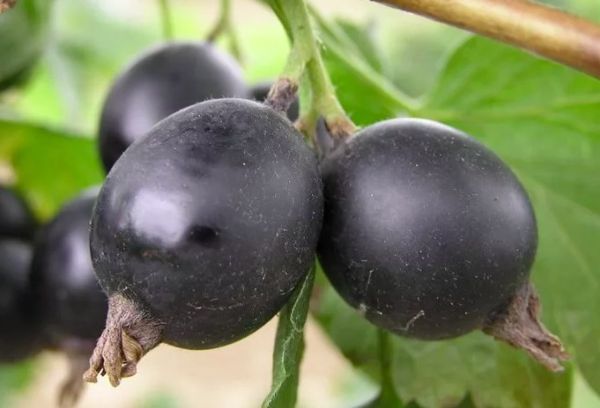


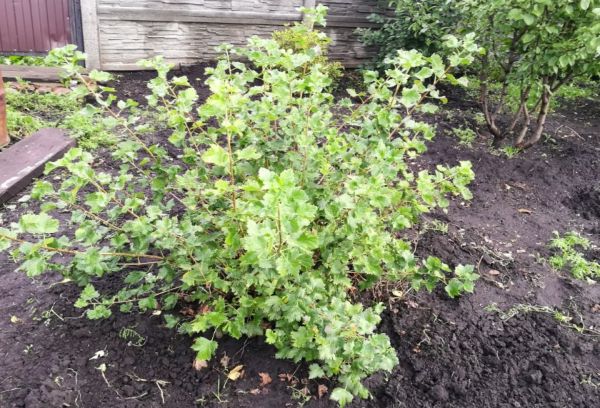

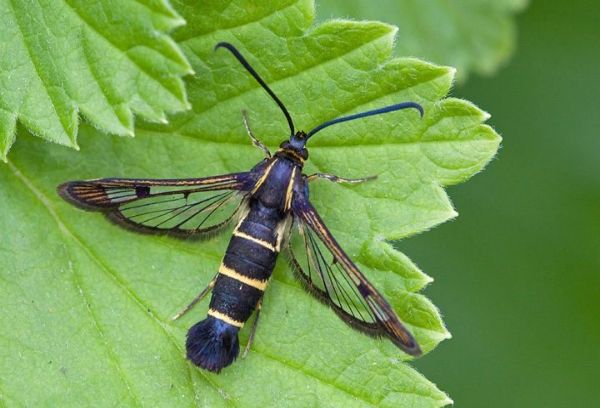
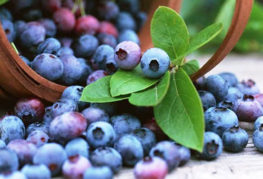
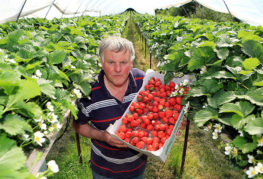
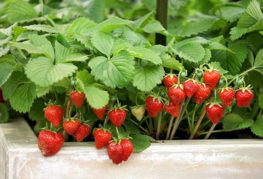
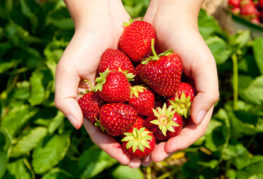
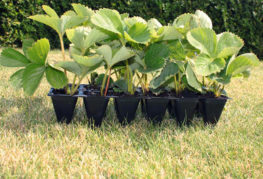
and will be published shortly.